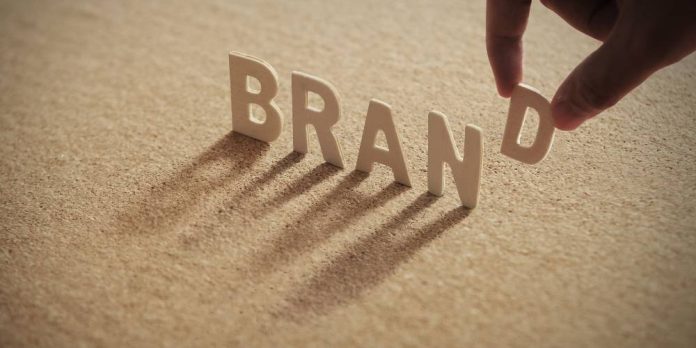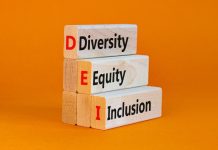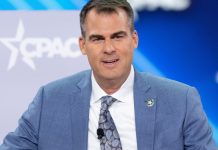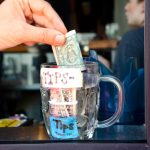The first four years of US sports betting has been a battle of the brands. TV screens are flooded with Jamie Foxx, living like a Caesar, and a glut of ads for FanDuel and DraftKings. Online, Dave Portnoy uses his empire to plug Barstool Sportsbook while Nikki Minaj takes to the ‘Gram to talk MaximBet. And behind the scenes, C suites across the world have been rapidly inking massive deals for media partnership, licensing, and market access.
This pace seems untenable to everyone in the industry. The big question is not when it stops but what comes next for the major US sports betting brands? A recent SBC Summit North America panel, “Brands, brands, brands: Will M & A activity follow the battle of brands?”, answered all those questions, and more.
Managing Director of Truist Securities Barry Jonas moderated the panel, which featured:
- Managing Partner-Las Vegas for KPGM US Rick Arpin
- Chairman and CEO of Tekkorp Capital Matt Davey
- COO of Bally’s Interactive Adi Dhandhania
- Managing Partner at SeventySix Capital Wayne Kimmel
The current brand battle
It is pretty clear today’s brand ranks are largely influenced by who is spending the most on marketing, particularly acquisition marketing in the form of big deposit offers. The panel and the industry agree that this is not sustainable.
“If you look at other mature markets, people who were winning at the start weren’t necessarily the winners 10 years later. So is that something that’s possible here? Yes, it’s very possible because people who are leading the chart today are struggling with cash flows. So, at some point, you need to get to a business that is sustainable and can be grown in a responsible manner,” Dhandhania explained.
Kimmel agreed that the pressure to sign glamorous deals and acquire companies that inflate valuation is fine for the short-term, but will have a negative impact in the long run.
“I think Wall Street’s killing these guys, and it’s a shame that they’re doing that but it is what it is,” he said.
As Davey sees it, the industry is already learning from that mistake and valuations on sports betting brands are coming back down to Earth.
“Just to put it bluntly, money was free last year. It’s expensive this year. And if you came to us and said ‘hey, we have a business, it looks kind of like what DraftKings looks like in 20 years from now, it should be worth 20 times some imaginary number of revenue next year’? That’s over.”
Finding the right gambling brand
As the focus shifts from getting the biggest brand or spending the most to make your brand big, the importance of a picking a brand that resonates becomes all the more important.
Dhandhania explained how the company that became Bally’s, Twin River, weighed several options before landing on the classic gaming brand that has represented everything from pinball machines to health clubs:
“We were called Twin River, right? Which was something that we knew wouldn’t resonate well across our digital portfolio. So it was important for us to get the Bally’s brand, which we thought was very flexible. So that was the first step in the evolution of getting the right brand that we knew would translate across gaming media and other assets that we would have acquired. So we, we made sure that Bally’s could be brought back and we were able to put that on all of the TV networks through our Bally Sport’s relationship.”
There were other, more recognizable sports brands in the running, but for Twin River’s purposes, this was a brand that needed to represent more than just a sportsbook. It needed to embody a company that is equal parts digital and retail casino. He used Sports Illustrated as an example of a brand with a stronger tie to sports, but something that would not work as a land-based entity, as it would be difficult to sell “Sports Illustrated Casino”.
Davey, who has decades of experience on the casino side of things, told a similar story when it came to specific slot titles. Companies created slot games based on Marvel and DC characters, rolling out titles with Batman and Superman, but they didn’t resonate with customers. One brand that did? Kenny Rogers.
The chicken maven and songster made sense to customers in the setting because of his classic tune “The Gambler”, while the dots were harder to connect when it came to the better-known superheroes. Davey summed it up well:
“If you have a brand that has no relevance whatsoever to sports betting or a casino, it doesn’t resonate with the consumer.”
US betting brands need to focus more on the customer
Now that the big spending is scaling back, US betting brands have to be more mindful about spending and customer needs. Companies are already curbing spending and publicly commenting on it.
“Why does Rush Street or why does Churchill Downs go ‘Oh, well, maybe we don’t need to be in that’? Because the middle sucks, right? You got to either be big or you got to be focused. And so I think we’ll continue to see some level of consolidation,” Arpin observed.
For Arpin, this is a natural progression, especially given the learning curve companies are experiencing in the US market:
“ I certainly find that gaming companies have not been great at in the land-based side and, maybe given the nascency here of online in the US, maybe on the online side, is thinking about the customer. What does the customer want? What do they respect? What do they trust? What do they believe in? What’s going to drive them to actually motivate them to do things?”
Kimmel, who is always on the lookout for the latest new start-up, sees this as an opportunity for up-and-coming companies. Yes, the time of huge acquisition numbers may be gone, but there is opportunity in this moment.
“This is the time you can build. You could stay under the radar. You’re not gonna have to be public. You’re just out there, but this is the time to do that,” he said. “You can build really amazing innovative solutions that the big guys want or need, or say maybe it’s just not on the roadmap today, but that’s the kind of company that you can build. Those are the products that you build, that either end up being, you know, a standalone, big business in the future or something that when the bigger companies in the industry are ready could be partners and they could also be acquirers of that business.”
The time for gaming innovation is on the horizon
Customer concerns and innovation will always be part of the businees, but Davey is convinced that brand is still king when it comes to acquisition and market share in the US space:
“So product doesn’t matter right now. What matters is marketing. And all the software suppliers will disagree with this, but right now it doesn’t matter. All the product can look pretty much the damn same. People are still learning how to sign up, how to put their money into accounts, etc. At some point, we’ll move away from marketing-driven industry to where product and customer service matters. And that’s where the UK got to with product and customers. It really does matter. But you have to get through the first phase. Will there be changes in leadership along that? Absolutely. It’s no longer now who’s got the biggest brand but who’s got the best customer service? Who’s got the best product? Who meets the needs of the consumers?”
Everyone on the panel was excited about the opportunities this next phase will bring. Moreover, they see the potential for a shake-up at the top of the brand pecking order.
“We’ve seen the power of both the DraftKings and FanDuel brand already been established in the market in each of the states, and they’ve been able to leverage that. That doesn’t mean you can’t come into the market with a new brand. It just means it’s a lot harder and it becomes a balance sheet issue. A marketing challenge,” Davey explained.
Kimmel also cautioned that what has been a relatively insular industry so far will have to contend with non-endemic brands and major players sooner or later:
“Other brands and some of the biggest tech players in the world, like Amazon like Apple, like Google–where are they and where do they end up? They’ve all kind of have their toe in the water here. Thursday Night Football. They’re not just doing Thursday Night Football at Amazon just to do Thursday Night Football. There’s more there. Apple’s not doing Friday Night Baseball just to do Friday Night Baseball. There’s more. And that’s something as a technology investor in this industry is exciting. They’re looking for opportunities to enhance their product, to reach more customers, reach more consumers, reach more fans. [They’re] trying to really make the game even more engaging. How do you infuse more and make that experience better for all of us? So I’m excited and really interested in seeing how this all starts to play out.”
These big companies could be bringing their cutting-edge tech solutions as well. As Davey noted, the product looks relatively comparable across the entire industry. Kimmel agreed, noting the apps are still Version 1. When the tech starts to differentiate products is when things will get really interesting.
“When I turn on my app, it should know I’m an Eagles fan. I’m a Phillies fan. My app looks like Matt’s app when he’s in Australia” he argued. “I mean, it’s got to get better. It’s going to get better. Now the question is, is this stuff going to be done by the operators themselves? Or is this going to be the entrepreneurs who come in and help? Who knows? We’ll see. I obviously think it’s the entrepreneurs It’s why we are we’re constantly out there.”
It does suck to be in the middle of the pack of the already competitive US sports betting industry. The consensus from this panel though is the industry is still so new that there can and will be shifts at the top of the sports betting brand hierarchy. It’s inevitable.













